Effects of SB939 are mediated by STAT3 to inhibit breast cancer cell metastasis‑related genes
- Authors:
- Chen-Hui Qin
- Shu-Min Zhang
- Xiao-Ou Huo
- Ruo-Piao Song
- Jun Ling
-
Affiliations: Department of Oncology, Taiyuan City Central Hospital, Taiyuan, Shanxi 030009, P.R. China, Clinical Laboratory Department, Shanxi Provincial People's Hospital, Taiyuan, Shanxi 030001, P.R. China - Published online on: March 19, 2025 https://doi.org/10.3892/ol.2025.14982
- Article Number: 236
-
Copyright: © Qin et al. This is an open access article distributed under the terms of Creative Commons Attribution License.
This article is mentioned in:
Abstract
 |
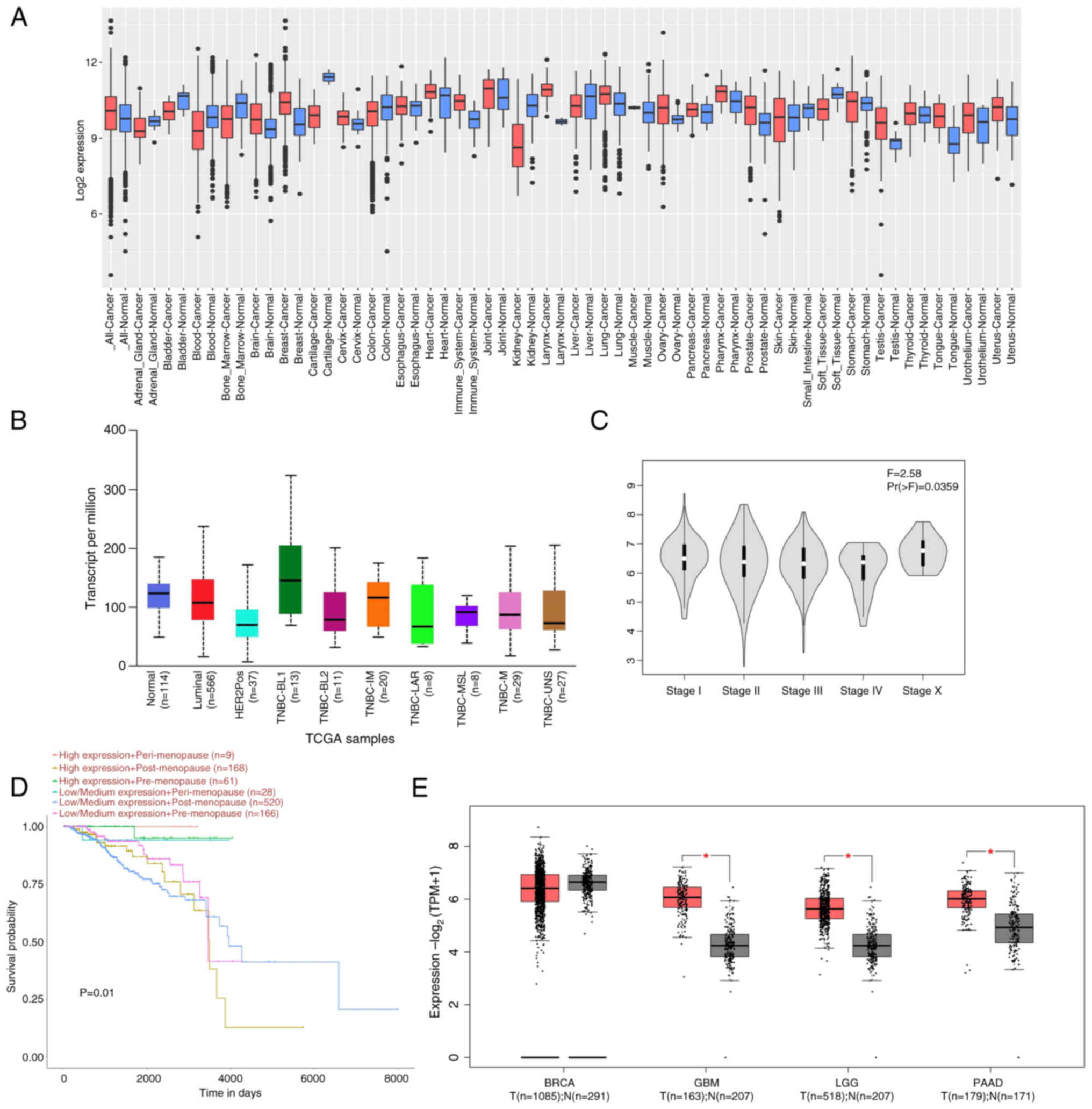 |
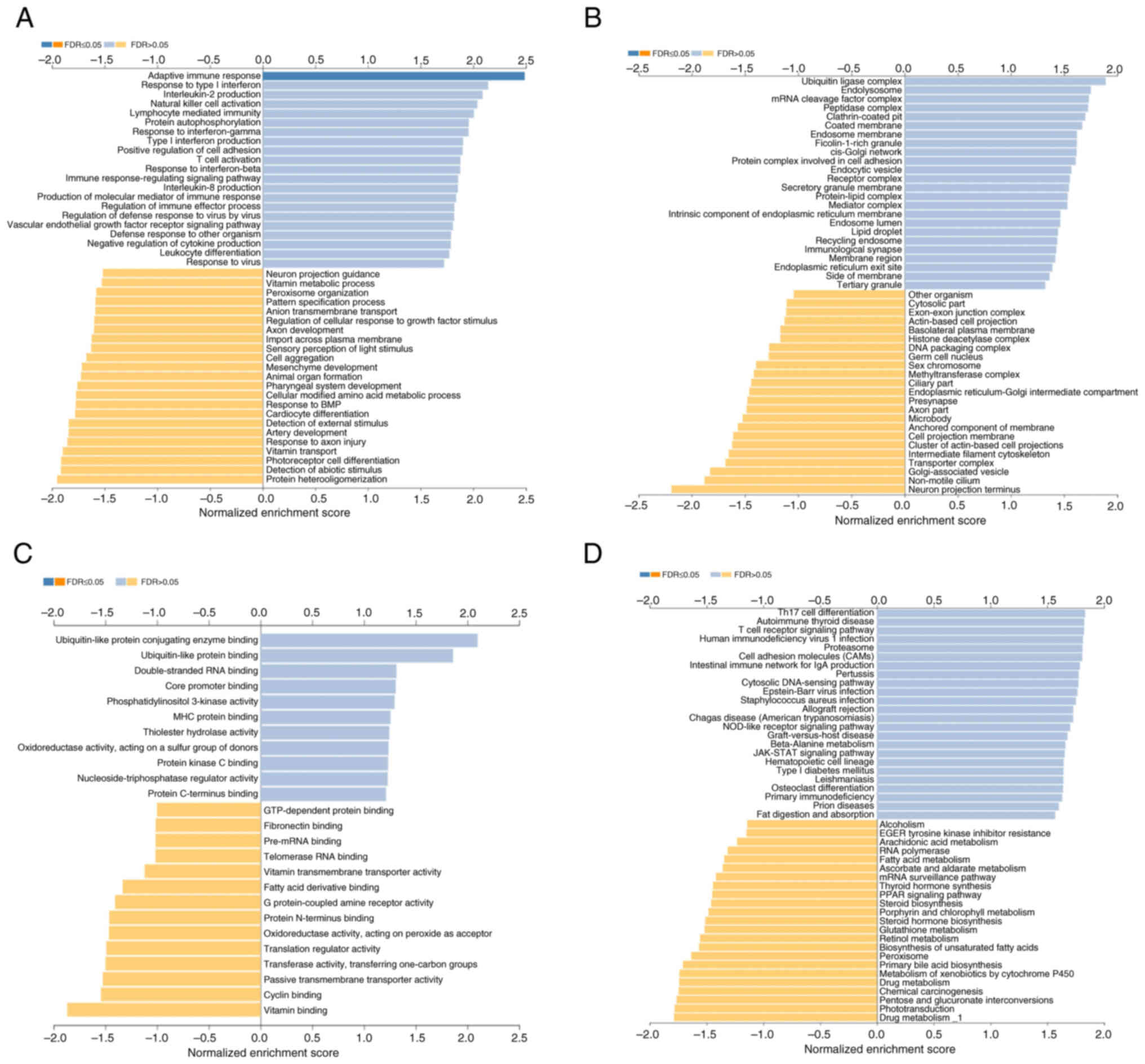 |
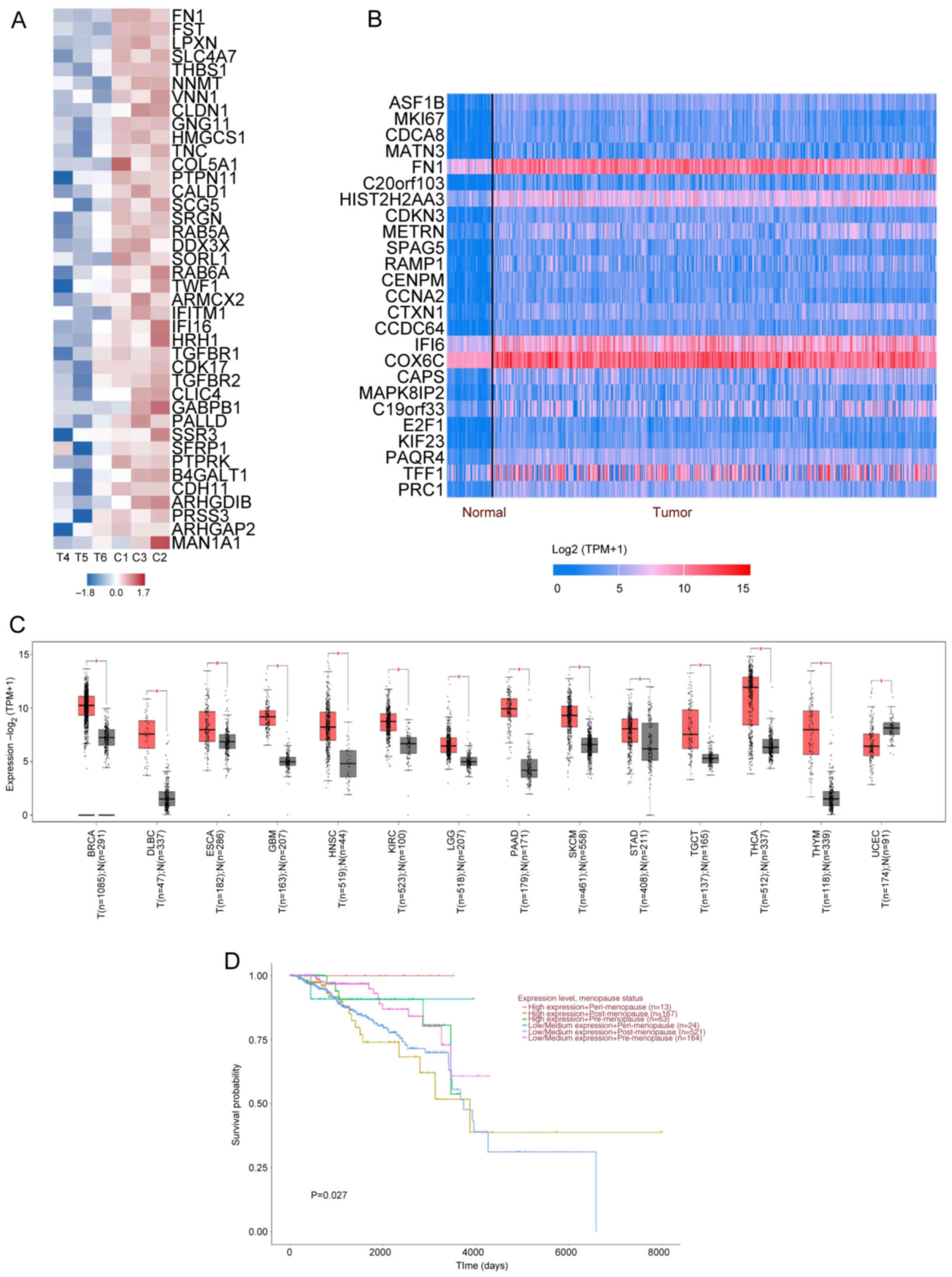 |
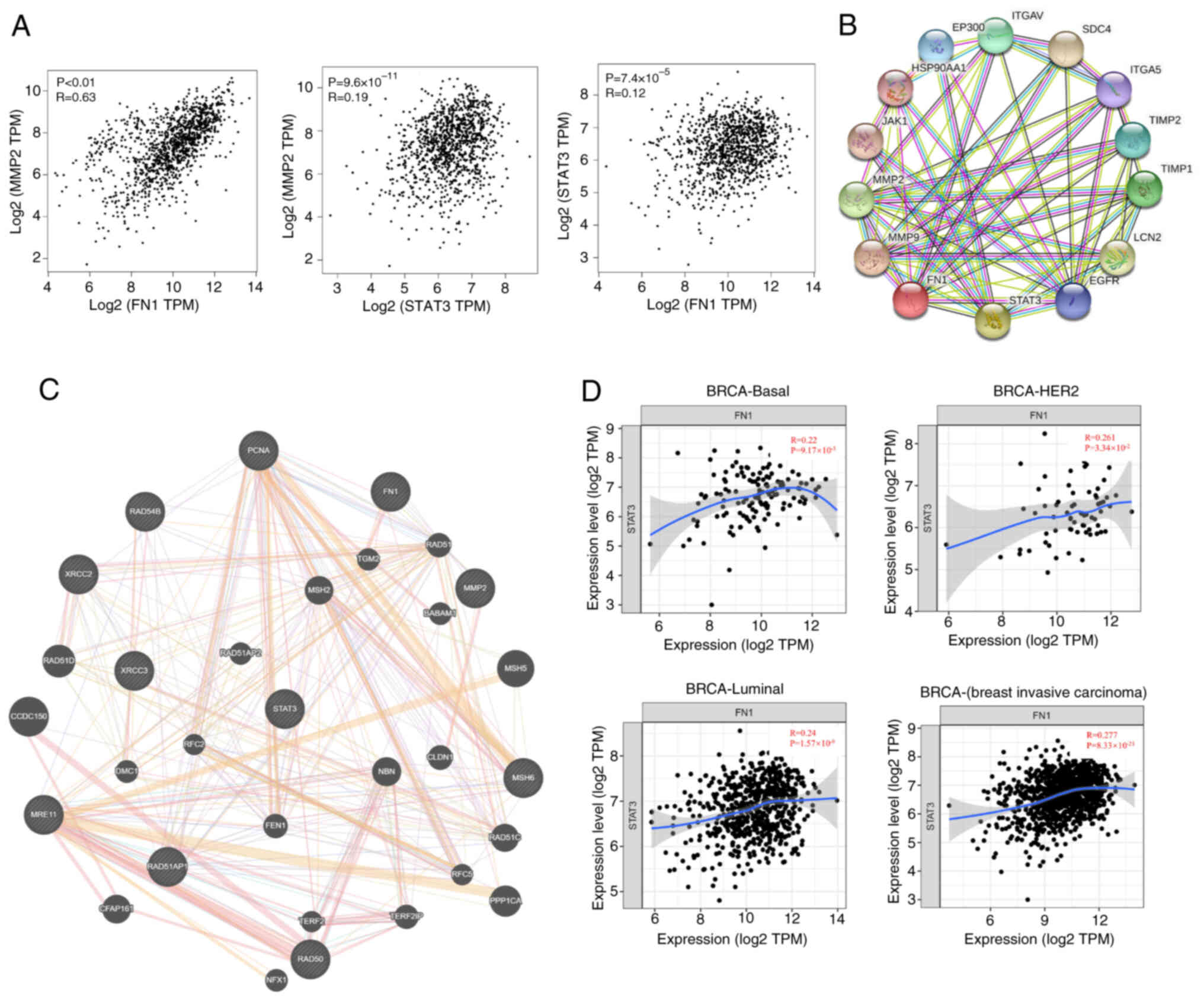 |
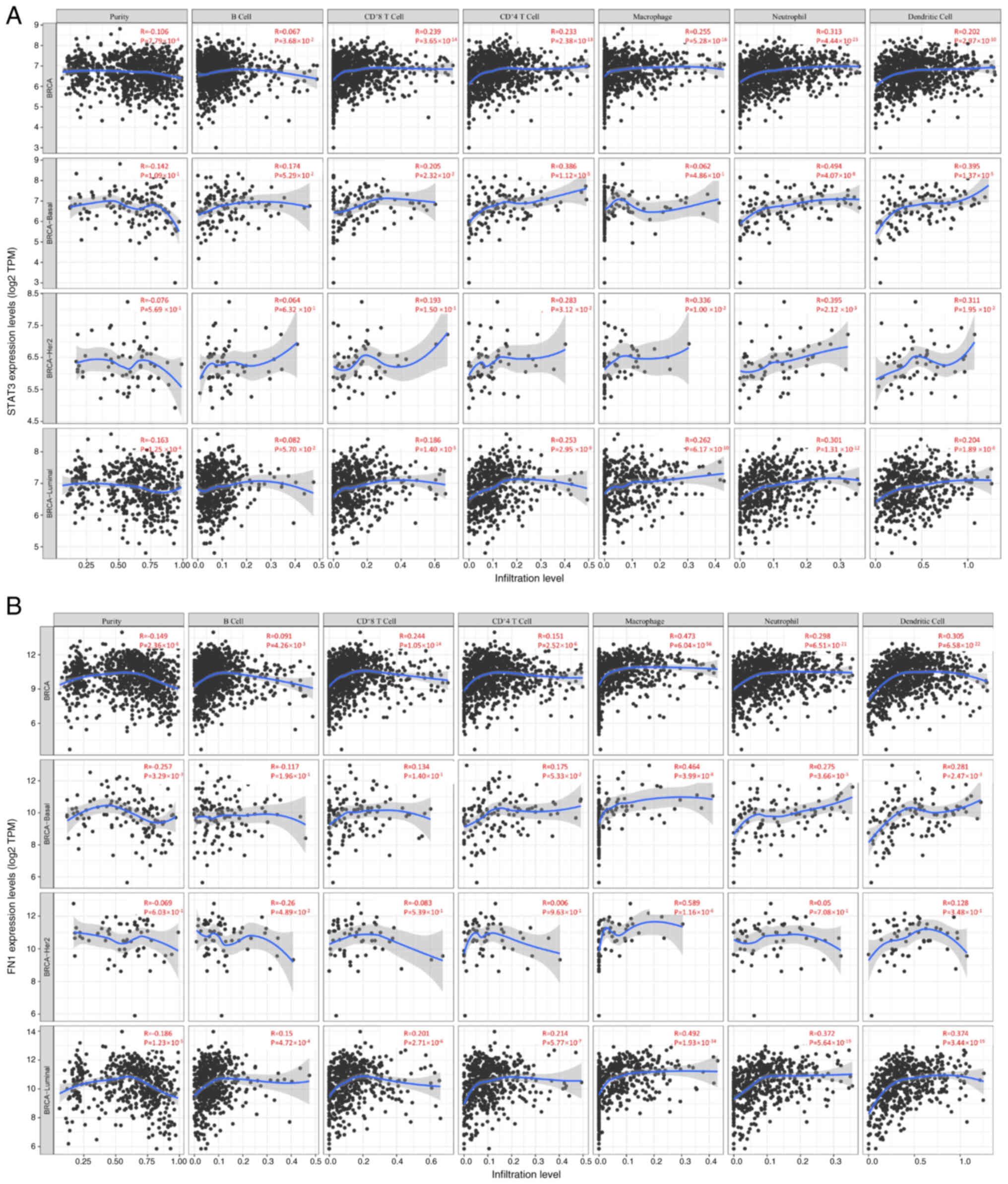 |
|
Siegel RL, Giaquinto AN and Jemal A: Cancer statistics, 2024. CA Cancer J Clin. 74:12–49. 2024. View Article : Google Scholar : PubMed/NCBI | |
|
Dent R, Trudeau M, Pritchard KI, Hanna WM, Kahn HK, Sawka CA, Lickley LA, Rawlinson E, Sun P and Narod SA: Triple-negative breast cancer: Clinical features and patterns of recurrence. Clin Cancer Res. 13:4429–4434. 2007. View Article : Google Scholar : PubMed/NCBI | |
|
Cancer Genome Atlas Network, . Comprehensive molecular portraits of human breast tumours. Nature. 490:61–70. 2012. View Article : Google Scholar : PubMed/NCBI | |
|
Yin L, Duan JJ, Bian XW and Yu SC: Triple-negative breast cancer molecular subtyping and treatment progress. Breast Cancer Res. 22:612020. View Article : Google Scholar : PubMed/NCBI | |
|
Karim AM, Eun Kwon J, Ali T, Jang J, Ullah I, Lee YG, Park DW, Park J, Jeang JW and Kang SC: Triple-negative breast cancer: Epidemiology, molecular mechanisms, and modern vaccine-based treatment strategies. Biochem Pharmacol. 212:1155452023. View Article : Google Scholar : PubMed/NCBI | |
|
Gerstberger S, Jiang Q and Ganesh K: Metastasis. Cell. 186:1564–1579. 2023. View Article : Google Scholar : PubMed/NCBI | |
|
Manfioletti G and Fedele M: Epithelial-mesenchymal transition (EMT). Int J Mol Sci. 24:113862023. View Article : Google Scholar : PubMed/NCBI | |
|
Saitoh M: Transcriptional regulation of EMT transcription factors in cancer. Semin Cancer Biol. 97:21–29. 2023. View Article : Google Scholar : PubMed/NCBI | |
|
Farghadani R and Naidu R: The anticancer mechanism of action of selected polyphenols in triple-negative breast cancer (TNBC). Biomed Pharmacother. 165:1151702023. View Article : Google Scholar : PubMed/NCBI | |
|
Robson M, Im SA, Senkus E, Xu B, Domchek SM, Masuda N, Delaloge S, Li W, Tung N, Armstrong A, et al: Olaparib for metastatic breast cancer in patients with a germline BRCA mutation. N Engl J Med. 377:523–533. 2017. View Article : Google Scholar : PubMed/NCBI | |
|
Levine AJ: p53: 800 million years of evolution and 40 years of discovery. Nat Rev Cancer. 20:471–480. 2020. View Article : Google Scholar : PubMed/NCBI | |
|
Emens LA, Asquith JM, Leatherman JM, Kobrin BJ, Petrik S, Laiko M, Levi J, Daphtary MM, Biedrzycki B, Wolff AC, et al: Timed sequential treatment with cyclophosphamide, doxorubicin, and an allogeneic granulocyte-macrophage colony-stimulating factor-secreting breast tumor vaccine: A chemotherapy dose-ranging factorial study of safety and immune activation. J Clin Oncol. 27:5911–5918. 2009. View Article : Google Scholar : PubMed/NCBI | |
|
Hwang JP, Fisch MJ, Lok AS, Zhang H, Vierling JM and Suarez-Almazor ME: Trends in hepatitis B virus screening at the onset of chemotherapy in a large US cancer center. BMC Cancer. 13:5342013. View Article : Google Scholar : PubMed/NCBI | |
|
De Mattos-Arruda L, Weigelt B, Cortes J, Won HH, Ng CKY, Nuciforo P, Bidard FC, Aura C, Saura C, Peg V, et al: Capturing intra-tumor genetic heterogeneity by de novo mutation profiling of circulating Cell-free tumor DNA: A proof-of-principle. Ann Oncol. 25:1729–1735. 2014. View Article : Google Scholar : PubMed/NCBI | |
|
Adrada BE, Moseley TW, Kapoor MM, Scoggins ME, Patel MM, Perez F, Nia ES, Khazai L, Arribas E, Rauch GM and Guirguis MS: Triple-negative breast cancer: Histopathologic features, genomics, and treatment. Radiographics. 43:e2300342023. View Article : Google Scholar : PubMed/NCBI | |
|
Zou S, Tong Q, Liu B, Huang W, Tian Y and Fu X: Targeting STAT3 in cancer immunotherapy. Mol Cancer. 19:1452020. View Article : Google Scholar : PubMed/NCBI | |
|
Poli V and Camporeale A: STAT3-mediated metabolic reprograming in cellular transformation and implications for drug resistance. Front Oncol. 5:1212015. View Article : Google Scholar : PubMed/NCBI | |
|
Ouyang S, Li H, Lou L, Huang Q, Zhang Z, Mo J, Li M, Lu J, Zhu K, Chu Y, et al: Inhibition of STAT3-ferroptosis negative regulatory axis suppresses tumor growth and alleviates chemoresistance in gastric cancer. Redox Biol. 52:1023172022. View Article : Google Scholar : PubMed/NCBI | |
|
Sadrkhanloo M, Entezari M, Orouei S, Ghollasi M, Fathi N, Rezaei S, Hejazi ES, Kakavand A, Saebfar H, Hashemi M, et al: STAT3-EMT axis in tumors: Modulation of cancer metastasis, stemness and therapy response. Pharmacol Res. 182:1063112022. View Article : Google Scholar : PubMed/NCBI | |
|
El-Tanani M, Al Khatib AO, Aladwan SM, Abuelhana A, McCarron PA and Tambuwala MM: Importance of STAT3 signalling in cancer, metastasis and therapeutic interventions. Cell Signal. 92:1102752022. View Article : Google Scholar : PubMed/NCBI | |
|
Sadrkhanloo M, Paskeh MDA, Hashemi M, Raesi R, Bahonar A, Nakhaee Z, Entezari M, Beig Goharrizi MAS, Salimimoghadam S, Ren J, et al: STAT3 signaling in prostate cancer progression and therapy resistance: An oncogenic pathway with diverse functions. Biomed Pharmacother. 158:1141682023. View Article : Google Scholar : PubMed/NCBI | |
|
Ma JH, Qin L and Li X: Role of STAT3 signaling pathway in breast cancer. Cell Commun Signal. 18:332020. View Article : Google Scholar : PubMed/NCBI | |
|
Jin W: Role of JAK/STAT3 signaling in the regulation of metastasis, the transition of cancer stem cells, and chemoresistance of cancer by Epithelial-mesenchymal transition. Cells. 9:2172020. View Article : Google Scholar : PubMed/NCBI | |
|
Qin J, Shen X, Zhang J and Jia D: Allosteric inhibitors of the STAT3 signaling pathway. Eur J Med Chem. 190:1121222020. View Article : Google Scholar : PubMed/NCBI | |
|
Yu M, Peng X, Li H, Xu Y, Sun X and Chen J: Gankyrin has a potential role in embryo implantation via activation of STAT3. Reproduction. 163:157–165. 2022. View Article : Google Scholar : PubMed/NCBI | |
|
Wang Q, Zhang R, He Y, Mao G and Kong Z: Taraxasterol enhanced bladder cancer cells radiosensitivity via inhibiting the COX-2/PGE2/JAK2/STAT3/MMP pathway. Int J Radiat Biol. 100:791–801. 2024. View Article : Google Scholar : PubMed/NCBI | |
|
Aigner P, Just V and Stoiber D: STAT3 isoforms: Alternative fates in cancer? Cytokine. 118:27–34. 2019. View Article : Google Scholar : PubMed/NCBI | |
|
Taifour T, Attalla SS, Zuo D, Gu Y, Sanguin-Gendreau V, Proud H, Solymoss E, Bui T, Kuasne H, Papavasiliou V, et al: The tumor-derived cytokine Chi3l1 induces neutrophil extracellular traps that promote T cell exclusion in triple-negative breast cancer. Immunity. 56:2755–2772.e8. 2023. View Article : Google Scholar : PubMed/NCBI | |
|
Balachandran K, Ramli R, Karsani SA and Abdul Rahman M: Identification of potential biomarkers and small molecule drugs for Bisphosphonate-related osteonecrosis of the jaw (BRONJ): An integrated bioinformatics study using big data. Int J Mol Sci. 24:86352023. View Article : Google Scholar : PubMed/NCBI | |
|
Roy ME, Veilleux C and Annabi B: In vitro biomaterial priming of human mesenchymal stromal/stem cells: Implication of the Src/JAK/STAT3 pathway in vasculogenic mimicry. Sci Rep. 14:214442024. View Article : Google Scholar : PubMed/NCBI | |
|
Huang X, Liu Y, Qian C, Shen Q, Wu M, Zhu B and Feng Y: CHSY3 promotes proliferation and migration in gastric cancer and is associated with immune infiltration. J Transl Med. 21:4742023. View Article : Google Scholar : PubMed/NCBI | |
|
Pan S, Zhu J, Liu P, Wei Q, Zhang S, An W, Tong Y, Cheng Z and Liu F: FN1 mRNA 3′-UTR supersedes traditional fibronectin 1 in facilitating the invasion and metastasis of gastric cancer through the FN1 3′-UTR-let-7i-5p-THBS1 axis. Theranostics. 13:5130–5150. 2023. View Article : Google Scholar : PubMed/NCBI | |
|
Liu X, Meng L, Li X, Li D, Liu Q, Chen Y, Li X, Bu W and Sun H: Regulation of FN1 degradation by the p62/SQSTM1-dependent autophagy-lysosome pathway in HNSCC. Int J Oral Sci. 12:342020. View Article : Google Scholar : PubMed/NCBI | |
|
Li XF, Selli C, Zhou HL, Cao J, Wu S, Ma RY, Lu Y, Zhang CB, Xun B, Lam AD, et al: Macrophages promote anti-androgen resistance in prostate cancer bone disease. J Exp Med. 220:e202210072023. View Article : Google Scholar : PubMed/NCBI | |
|
Zhang Y, Wang Y, Guo Y, Liao Z, Xu R and Ruan Z: miR-135b promotes the invasion and metastasis of hepatocellular carcinoma cells. Xi Bao Yu Fen Zi Mian Yi Xue Za Zhi. 31:1316–1321. 2015.(In Chinese). PubMed/NCBI | |
|
Gang D, Qing O, Yang Y, Masood M, Wang YH, Linhui J, Haotao S, Li G, Liu C, Nasser MI and Zhu P: Cyanidin prevents cardiomyocyte apoptosis in mice after myocardial infarction. Naunyn Schmiedebergs Arch Pharmacol. 397:5883–5898. 2024. View Article : Google Scholar : PubMed/NCBI | |
|
Zhang XX, Luo JH and Wu LQ: FN1 overexpression is correlated with unfavorable prognosis and immune infiltrates in breast cancer. Front Genet. 13:9136592022. View Article : Google Scholar : PubMed/NCBI | |
|
Matsuoka T and Yashiro M: Bioinformatics analysis and validation of potential markers associated with prediction and prognosis of gastric cancer. Int J Mol Sci. 25:58802024. View Article : Google Scholar : PubMed/NCBI | |
|
Schneeweiss A, Denkert C, Fasching PA, Fremd C, Gluz O, Kolberg-Liedtke C, Loibl S and Lück HJ: Diagnosis and therapy of Triple-negative breast cancer (TNBC)-Recommendations for daily routine practice. Geburtshilfe Frauenheilkd. 79:605–617. 2019. View Article : Google Scholar : PubMed/NCBI | |
|
Long L, Fei X, Chen L, Yao L and Lei X: Potential therapeutic targets of the JAK2/STAT3 signaling pathway in triple-negative breast cancer. Front Oncol. 14:13812512024. View Article : Google Scholar : PubMed/NCBI | |
|
Mou J, Xu X, Wang F, Kong W, Chen J and Ren J: HMGN4 plays a key role in STAT3-mediated oncogenesis of triple-negative breast cancer. Carcinogenesis. 43:874–884. 2022. View Article : Google Scholar : PubMed/NCBI | |
|
Novotny-Diermayr V, Sangthongpitag K, Hu CY, Wu X, Sausgruber N, Yeo P, Greicius G, Pettersson S, Liang AL, Loh YK, et al: SB939, a novel potent and orally active histone deacetylase inhibitor with high tumor exposure and efficacy in mouse models of colorectal cancer. Mol Cancer Ther. 9:642–652. 2010. View Article : Google Scholar : PubMed/NCBI | |
|
Novotny-Diermayr V, Hart S, Goh KC, Cheong A, Ong LC, Hentze H, Pasha MK, Jayaraman R, Ethirajulu K and Wood JM: The oral HDAC inhibitor pracinostat (SB939) is efficacious and synergistic with the JAK2 inhibitor pacritinib (SB1518) in preclinical models of AML. Blood Cancer J. 2:e692012. View Article : Google Scholar : PubMed/NCBI | |
|
Chen J, Li N, Liu B, Ling J, Yang W, Pang X and Li T: Pracinostat (SB939), a histone deacetylase inhibitor, suppresses breast cancer metastasis and growth by inactivating the IL-6/STAT3 signalling pathways. Life Sci. 248:1174692020. View Article : Google Scholar : PubMed/NCBI | |
|
Sumanadasa SD, Goodman CD, Lucke AJ, Skinner-Adams T, Sahama I, Haque A, Do TA, McFadden GI, Fairlie DP and Andrews KT: Antimalarial activity of the anticancer histone deacetylase inhibitor SB939. Antimicrob Agents Chemother. 56:3849–3856. 2012. View Article : Google Scholar : PubMed/NCBI | |
|
Jenuwein T and Allis CD: Translating the histone code. Science. 293:1074–1080. 2001. View Article : Google Scholar : PubMed/NCBI | |
|
Piekna-Przybylska D, Bambara RA and Balakrishnan L: Acetylation regulates DNA repair mechanisms in human cells. Cell Cycle. 15:1506–1517. 2016. View Article : Google Scholar : PubMed/NCBI | |
|
Banerjee K and Resat H: Constitutive activation of STAT3 in breast cancer cells: A review. Int J Cancer. 138:2570–2578. 2016. View Article : Google Scholar : PubMed/NCBI | |
|
Zhou Y, Cao G, Cai H, Huang H and Zhu X: The effect and clinical significance of FN1 expression on biological functions of gastric cancer cells. Cell Mol Biol (Noisy-le-grand). 66:191–198. 2020. View Article : Google Scholar : PubMed/NCBI | |
|
Costanzo L, Soto B, Meier R and Geraghty P: The biology and function of tissue inhibitor of metalloproteinase 2 in the lungs. Pulm Med. 2022:36327642022. View Article : Google Scholar : PubMed/NCBI | |
|
Li Z, Wei H, Li S, Wu P and Mao X: The Role of progesterone receptors in breast cancer. Drug Des Devel Ther. 16:305–314. 2022. View Article : Google Scholar : PubMed/NCBI | |
|
Burstein HJ, Curigliano G, Thurlimann B, Weber WP, Poortmans P, Regan MM, Senn HJ, Winer EP and Gnant M; Panelists of the St Gallen Consensus Conference, : Customizing local and systemic therapies for women with early breast cancer: The St. Gallen International Consensus Guidelines for treatment of early breast cancer 2021. Ann Oncol. 32:1216–1235. 2021. View Article : Google Scholar : PubMed/NCBI | |
|
Zagami P and Carey LA: Triple negative breast cancer: Pitfalls and progress. NPJ Breast Cancer. 8:952022. View Article : Google Scholar : PubMed/NCBI | |
|
Yang Y, Li H, Yang W and Shi Y: Improving efficacy of TNBC immunotherapy: Based on analysis and subtyping of immune microenvironment. Front Immunol. 15:14416672024. View Article : Google Scholar : PubMed/NCBI | |
|
Reddy Baddam S, Ganta S, Nalla S, Banoth C, Vudari B, Akkiraju PC, Srinivas E and Tade RS: Polymeric nanomaterials-based theranostic platforms for triple-negative breast cancer (TNBC) treatment. Int J Pharm. 660:1243462024. View Article : Google Scholar : PubMed/NCBI | |
|
Soria JC, Ohe Y, Vansteenkiste J, Reungwetwattana T, Chewaskulyong B, Lee KH, Dechaphunkul A, Imamura F, Nogami N, Kurata T, et al: Osimertinib in untreated EGFR-mutated advanced Non-Small-Cell lung cancer. N Engl J Med. 378:113–125. 2018. View Article : Google Scholar : PubMed/NCBI | |
|
Hou Y, Yang K, Wang L, Wang J, Huang X, Piffkó A, Luo SZ, Yu X, Rao E, Martinez C, et al: Radiotherapy enhances metastasis through immune suppression by inducing PD-L1 and MDSC in distal sites. Clin Cancer Res. 30:1945–1958. 2024. View Article : Google Scholar : PubMed/NCBI | |
|
Hu Z, Wei F, Su Y, Wang Y, Shen Y, Fang Y, Ding J and Chen Y: Histone deacetylase inhibitors promote breast cancer metastasis by elevating NEDD9 expression. Signal Transduct Target Ther. 8:112023. View Article : Google Scholar : PubMed/NCBI | |
|
Yang T, Wang P, Yin X, Zhang J, Huo M, Gao J, Li G, Teng X, Yu H, Huang W and Wang Y: The histone deacetylase inhibitor PCI-24781 impairs calcium influx and inhibits proliferation and metastasis in breast cancer. Theranostics. 11:2058–2076. 2021. View Article : Google Scholar : PubMed/NCBI | |
|
Eigl BJ, North S, Winquist E, Finch D, Wood L, Sridhar SS, Powers J, Good J, Sharma M, Squire JA, et al: A phase II study of the HDAC inhibitor SB939 in patients with castration resistant prostate cancer: NCIC clinical trials group study IND195. Invest New Drugs. 33:969–976. 2015. View Article : Google Scholar : PubMed/NCBI | |
|
Razak AR, Hotte SJ, Siu LL, Chen EX, Hirte HW, Powers J, Walsh W, Stayner LA, Laughlin A, Novotny-Diermayr V, et al: Phase I clinical, pharmacokinetic and pharmacodynamic study of SB939, an oral histone deacetylase (HDAC) inhibitor, in patients with advanced solid tumours. Br J Cancer. 104:756–762. 2011. View Article : Google Scholar : PubMed/NCBI | |
|
Sumanadasa SD, Goodman CD, Lucke AJ, Skinner-Adams T, Sahama I, Haque A, Do TA, McFadden GI, Fairlie DP, Andrews KT, et al: Antimalarial activity of the anticancer histone deacetylase inhibitor SB939. Antimicrob Agents Chemother. 56:3849–3856. 2012. View Article : Google Scholar : PubMed/NCBI | |
|
Levy DE and Darnell JE Jr: Stats: Transcriptional control and biological impact. Nat Rev Mol Cell Biol. 3:651–662. 2002. View Article : Google Scholar : PubMed/NCBI | |
|
Yu H, Pardoll D and Jove R: STATs in cancer inflammation and immunity: A leading role for STAT3. Nat Rev Cancer. 9:798–809. 2009. View Article : Google Scholar : PubMed/NCBI | |
|
Wendt MK, Balanis N, Carlin CR and Schiemann WP: STAT3 and epithelial-mesenchymal transitions in carcinomas. JAKSTAT. 3:e289752014.PubMed/NCBI | |
|
Johnson DE, O'Keefe RA and Grandis JR: Targeting the IL-6/JAK/STAT3 signalling axis in cancer. Nat Rev Clin Oncol. 15:234–248. 2018. View Article : Google Scholar : PubMed/NCBI | |
|
Hrabia A: Matrix metalloproteinases (MMPs) and inhibitors of MMPs in the avian reproductive system: An Overview. Int J Mol Sci. 22:80562021. View Article : Google Scholar : PubMed/NCBI | |
|
Hashmi F, Mollapour M, Bratslavsky G and Bourboulia D: MMPs, tyrosine kinase signaling and extracellular matrix proteolysis in kidney cancer. Urol Oncol. 39:316–321. 2021. View Article : Google Scholar : PubMed/NCBI | |
|
Sohel M: Comprehensive exploration of Biochanin A as an oncotherapeutics potential in the treatment of multivarious cancers with molecular insights. Phytother Res. 38:489–506. 2024. View Article : Google Scholar : PubMed/NCBI | |
|
Verdugo E, Puerto I and Medina MA: An update on the molecular biology of glioblastoma, with clinical implications and progress in its treatment. Cancer Commun (Lond). 42:1083–1111. 2022. View Article : Google Scholar : PubMed/NCBI | |
|
Tan X, Liu Z, Wang Y, Wu Z, Zou Y, Luo S, Tang Y, Chen D, Yuan G and Yao K: miR-138-5p-mediated HOXD11 promotes cell invasion and metastasis by activating the FN1/MMP2/MMP9 pathway and predicts poor prognosis in penile squamous cell carcinoma. Cell Death Dis. 13:8162022. View Article : Google Scholar : PubMed/NCBI | |
|
He X, Huang Z, Liu P, Li Q, Wang M, Qiu M, Xiong Z and Yang S: Apatinib inhibits the invasion and metastasis of liver cancer cells by downregulating MMP-Related proteins via regulation of the NF-κB signaling pathway. Biomed Res Int. 2020:31261822020. View Article : Google Scholar : PubMed/NCBI | |
|
El-Ashmawy NE, Khedr EG, Abo-Saif MA and Hamouda SM: Long noncoding RNAs as regulators of epithelial mesenchymal transition in breast cancer: A recent review. Life Sci. 336:1223392024. View Article : Google Scholar : PubMed/NCBI | |
|
Zhang K, Liu P, Tang H, Xie X, Kong Y, Song C, Qiu X and Xiao X: Corrigendum: AFAP1-AS1 promotes Epithelial-Mesenchymal transition and tumorigenesis through Wnt/β-Catenin signaling pathway in Triple-negative breast cancer. Front Pharmacol. 11:11072020. View Article : Google Scholar : PubMed/NCBI | |
|
Masuda T, Fukuda A, Yamakawa G, Omatsu M, Namikawa M, Sono M, Fukunaga Y, Nagao M, Araki O, Yoshikawa T, et al: Pancreatic RECK inactivation promotes cancer formation, Epithelial-mesenchymal transition, and metastasis. J Clin Invest. 133:e1618472023. View Article : Google Scholar : PubMed/NCBI | |
|
Tan X, Liu Z, Wang Y, Wu Z, Zou Y, Luo S, Tang Y, Chen D, Yuan G and Yao K: miR-138-5p-mediated HOXD11 promotes cell invasion and metastasis by activating the FN1/MMP2/MMP9 pathway and predicts poor prognosis in penile squamous cell carcinoma. Cell Death Dis. 13:8162022. View Article : Google Scholar : PubMed/NCBI | |
|
Fan S, Guo C, Yang G, Hong L, Li H, Ma J, Zhou Y, Fan S, Xue Y and Zeng F: GPR160 regulates the self-renewal and pluripotency of mouse embryonic stem cells via JAK1/STAT3 signaling pathway. J Genet Genomics. 51:1055–1065. 2024. View Article : Google Scholar : PubMed/NCBI | |
|
Jiang H, Yang J, Li T, Wang X, Fan Z, Ye Q and Du Y: JAK/STAT3 signaling in cardiac fibrosis: A promising therapeutic target. Front Pharmacol. 15:13361022024. View Article : Google Scholar : PubMed/NCBI | |
|
Leszczynska KB, Freitas-Huhtamäki A, Jayaprakash C, Dzwigonska M, Vitorino FNL, Horth C, Wojnicki K, Gielniewski B, Szadkowska P, Kaza B, et al: H2A.Z histone variants facilitate HDACi-dependent removal of H3.3K27M mutant protein in pediatric high-grade glioma cells. Cell Rep. 43:1137072024. View Article : Google Scholar : PubMed/NCBI | |
|
Kuramoto K, Liang H, Hong JH and He C: Exercise-activated hepatic autophagy via the FN1-α5β1 integrin pathway drives metabolic benefits of exercise. Cell Metab. 35:620–632.e5. 2023. View Article : Google Scholar : PubMed/NCBI | |
|
Islam P, Rizzieri D, Lin C, de Castro C, Diehl L, Li Z, Moore J, Morris T and Beaven A: Phase II study of Single-agent and combination everolimus and panobinostat in relapsed or refractory diffuse large B-cell lymphoma. Cancer Invest. 39:871–879. 2021. View Article : Google Scholar : PubMed/NCBI | |
|
Arrowsmith CH, Bountra C, Fish PV, Lee K and Schapira M: Epigenetic protein families: A new frontier for drug discovery. Nat Rev Drug Discov. 11:384–400. 2012. View Article : Google Scholar : PubMed/NCBI |










